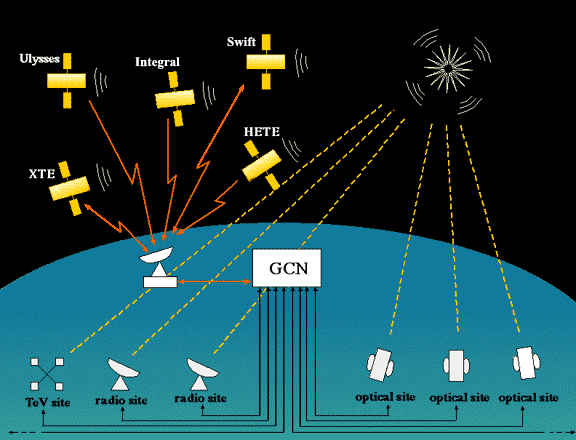
2. ELECTROMAGNETIC OBSERVATIONS
2.2 GRB COORDINATE NETWORK (GCN)
All satellite and ground-based electromagnetic observations, including both the prompt gamma-ray and multi-wavelength afterglow emissions associated with GRBs, are released to the public in real-time via email alerts by the GRB Coordinates Network (GCN), which was formerly known as the BATSE Coordinates Distribution Network (BACODINE), as illustrated in figure 2.2.1. This includes Swift (Gehrels et al. 2004) and the Gamma-Ray Large Area Space Telescope (GLAST) (Lichti et al. 2004), whose data become public once their respective detector verification phases are over. Institutions may sign up to receive GCN email alerts online (GCN 2005b). The alert archives may be also be conveniently accessed online (GCN 2005c). In addition to classical GRBs, soft gamma-ray repeater (SGR) flare activity is also reported.

FIGURE 2.2.1: Schematic Diagram of GRB Coordinate Network (GCN).
The ability of making rapid follow-up observations in other wavelengths lead to the discovery of anticipated afterglow emissions (Costa et al. 1997). In the specific context of GRB030329, a multitude of ground-based follow-up observations have provided a complete profile spanning the electromagnetic spectrum, which have lead to a spectroscopic redshift and the first definitive connection between long duration GRBs (lasting longer than 2 seconds) and Type Ic supernovae.